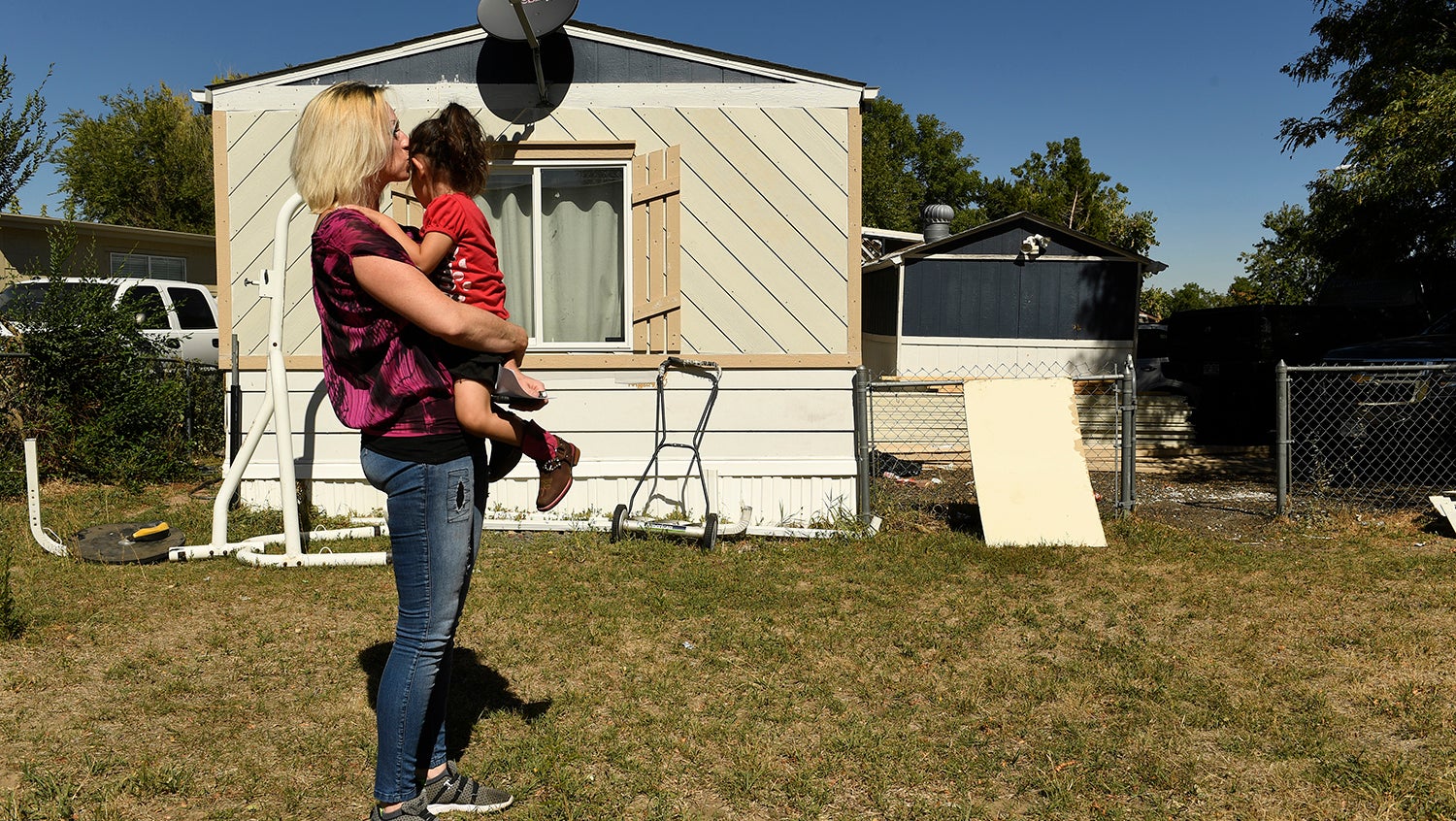BMC Pediatrician Presents a Model for Stably Housing Families in White House Forum
December 21, 2021

The Denver Post, Getty Images
One in five renters living with children are having difficulty keeping up on rent. The BMC pediatrician proposes a three-pronged solution.
“One thing that the COVID-19 pandemic has really made clear is that it has increased housing stability from a crisis to now, really, a pandemic in and of itself,” Boston Medical Center pediatrician Megan Sandel, MD, said during her presentation at the White House Office of Public Engagement Health Equity Forum last week.
The forum, held virtually on December 14, brought together officials in the Biden-Harris administration, key stakeholders in the healthcare sector, and health equity experts to address the intersection of housing and health.
Sandel, who is also a leader in the BOS Collaborative housing initiative, spoke alongside members of the U.S. Department of Housing and Urban Development and U.S. Department of Health & Human Services about the state of homelessness in the country—particularly amid the ongoing COVID-19 pandemic—and its effect on people’s healthcare access and health outcomes.
While homelessness was the main topic, Sandel also addressed the eviction crisis and the issue of housing instability, which she called the “iceberg below the surface” of homelessness. She was clear in calling structural racism the root cause of housing inequities in these areas, citing historic and longstanding issues, such as redlining and zoning.
Noting her role as a pediatrician, Sandel highlighted the impact of housing instability on families with children. In the excerpt below, she offers a three-pronged pathway to addressing housing insecurity and an example of how housing interventions can deeply improve the health of families, particularly families with medical complications.

Megan Sandel, MD
“[Because of the COVID-19 pandemic], we’re seeing an increase in people not being caught up on rent, and we’re seeing that the greatest impact of that is among renters of color. Then, as a pediatrician, I think it’s really important to call out the disproportionate impact of this on families with children. One in five renters living with children are having difficulty keeping up with rent.
One important way that we think about this is we think about the ways in which to leverage these opportunities in what I call a multipronged, upstream solution—the three-legged stool of how we need to move forward.
First, it’s capital for housing production. That’s a critical part of how we address the decades of disinvestment in building more affordable housing. We also need to have rental assistance. The 70,000 emergency rental vouchers are critical, but other income-boosting programs, like the Child Tax Credit and others, need to be expanded and continued. And, third, being able to have access to tailored services for families and individuals in order to make housing its most healthy proposition possible.
I’ll give you one example of this. From our research at Boston Medical Center, we tested a multidimensional housing intervention among medically complex families. This was tested as a pilot, randomized control trial, where we assigned people to the housing intervention or usual care of having a curated list of housing resources a family calls on their own.
We targeted families experiencing housing instability. They had to have at least one member of the household that was medically complex, either seeing multiple specialists or using emergency services on a regular basis. They had to have a child under 12, and they had to be Medicaid eligible.
We published our preliminary research in Health Affairs in April 2020. What we were able to show is even after just six months of being enrolled in this housing prescription trial, we were able to see a 32% reduction in children being reported in fair or poor health. And [there were] statistically significant improvements in a generalized anxiety score and a depression score among a parent. This is just really important that we were able to pair a housing voucher—in this case a public housing authority unit—with services in order to see this improvement even over the first six months.
I’ll end on this idea that the investments in the American Rescue Plan and the pending Build Back Better have the potential to be transformational in addressing historical disinvestment in housing and addressing racial and other inequities.” It is time to pass this bill now, with these resources needed more than ever.


